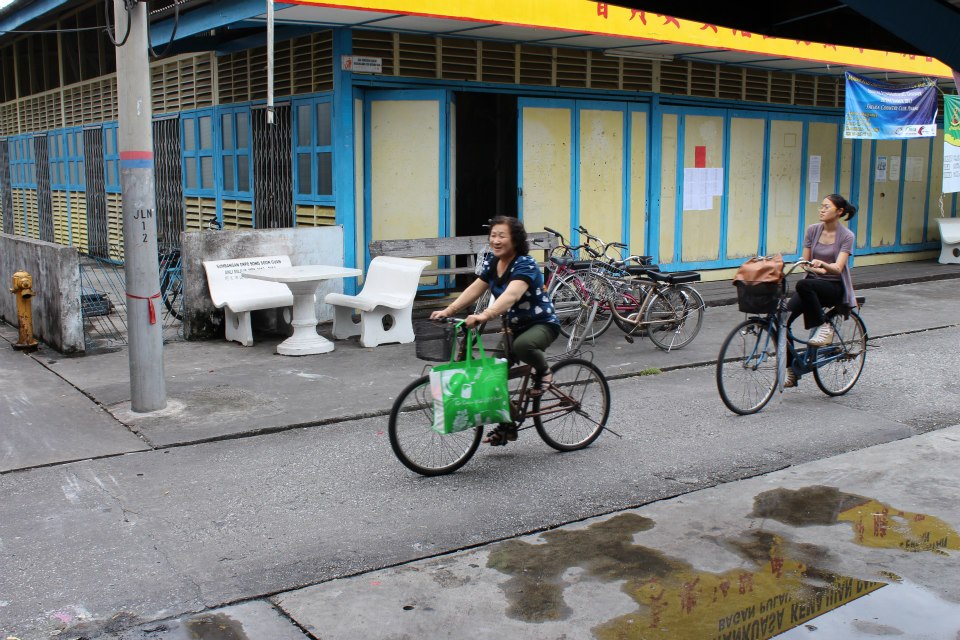Pulau Ketam – Selangor’s Charming Fishing Village

Not that many people are aware of the existence of Pulau Ketam, or Crab Island, when the name pops up in a conversation about doing day trips from Kuala Lumpur. Most would think that the swampy island off Port Klang is only inhabited by crabs and acts as a halfway house for smugglers and ancient grave worshipers. In reality, the island is home to a Chinese fishing community of about 30,000 people separated into two villages, Kampung Pulau Ketam and Kampung Sungai Lima. I was motivated to visit the island after receiving an invitation from my batch mate who was a high school teacher posted under Teach For Malaysia and I felt more of a obliging friend than a gawking tourist.
The drive along the Federal Highway on a cloudy Saturday morning was a breeze and after arriving at Port Klang and went to the jetty to purchase a return ticket to Pulau Ketam. The 45-minute ferry ride terminates at the main village and from there on, I was on basically off-the-ground throughout the whole trip. The muddy mangroves that make up the island necessitated the people to build the whole village on stilts and it’s not as rickety as you would have imagined since the stilts and walkway are made of steel and concrete. There are no cars in sight as the narrow paths only allow pedestrians, bicycles and the occasional motorcycle, if one needs to get around in a hurry.
Read Also: Kuala Selangor – Nature Lover’s Delight
I sense a strong feeling of close-knit togetherness here as my friend took me on a short tour around the village. You could see kids steadfastly playing badminton in the community hall, the elders engaging in some serious yet laugh-out-loud coffee-shop banter and cycling locals who would stop by the road side to have small talk with their neighbors. The main street is a hive of activities as it is lined with public facilities, grocery stores and seafood restaurants. My friend brought me to one of his favorite haunts and I couldn’t tell if it was the hunger, since being hungry makes everything taste good, because that was the freshest and most succulent deep fried red snapper with sambal I’ve ever tasted in a while.
I adore floating villages because they exude a vibe of respect and adaptation to nature rather than seeing nature as something to be bulldozed and flattened in the name of progress. Literally every building here are on stilts and the village is designed in a grid system with gaps between each structure to prevent flooding during high tide or heavy downpour. My friend’s school is designed in a similar fashion and I could imagine kids trying to jump into the water after school if it is high tide. Thankfully the swampy conditions color the water a murky brown thus providing a natural deterrence to any cheeky school-going children wanting some big splash.
Read Also: Raub – Colonial Town Comforts
Another fine example of the people’s respect with their surroundings was when I chanced upon intriguing sculptures at the Hock Leng Keng temple. Notwithstanding the other intricate sculptures in the temple and the vibrant color that is unbecoming of the village, I saw sculptures of a crab, prawn and fish resting high on the entrance of the temple. I usually see dragons, snakes and other animals ornamenting Chinese temples but these delectable sea creatures are highly regarded by the locals so as to be situated at a place of prominence. It is a fine tribute to these animals for providing sustenance and livelihood to the people of Pulau Ketam for over a hundred years.
I have to thank my friend, who is now in the civil service, for inviting me to Pulau Ketam only for me stumble upon its exuberant rustic charm shielded by the greed masqueraded as development on the mainland. There are teething problems plaguing the island like an antiquated waste disposal system but the people here are generally contented with their lives. Places like this are a rarity amidst the high-rise apartments and highways in the Klang Valley so it is no surprise that many city dwellers escape to Pulau Ketam for a short weekend excursion to be in touch with our roots of living in a tight community and unspoiled environment.
Travel Tips:
- You can either drive to Port Klang at the very end of Federal Route 2, or take the KTM Komuter via the Batu Caves – Pelabuhan Klang line. Train runs daily and is highly accessible from Kuala Lumpur.
- The Pulau Ketam ferry runs daily with an interval of 45 minutes with fares costing RM7.00 for adults and RM4.00 for children. Do take note that some ferries stop at Kampung Sungai Lima before making their way to Kampung Sungai Ketam.
- The best way to explore the island is to rent a bicycle for RM5.00 a day. Bike rental shops can be found right after the jetty or anywhere along the main street.




